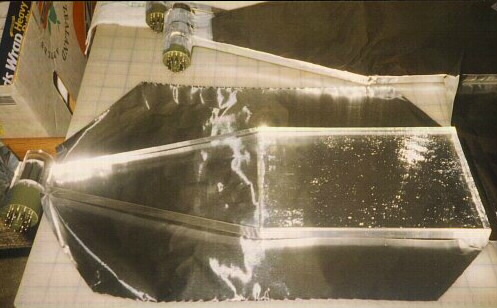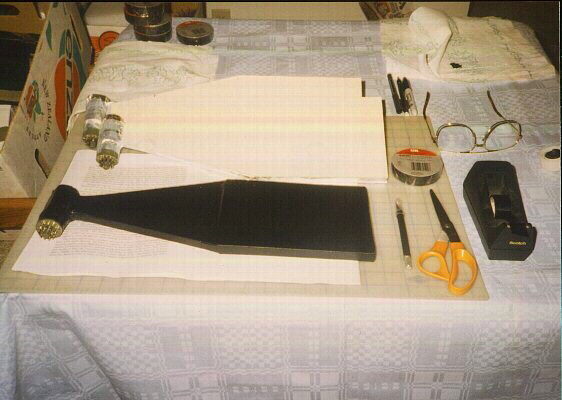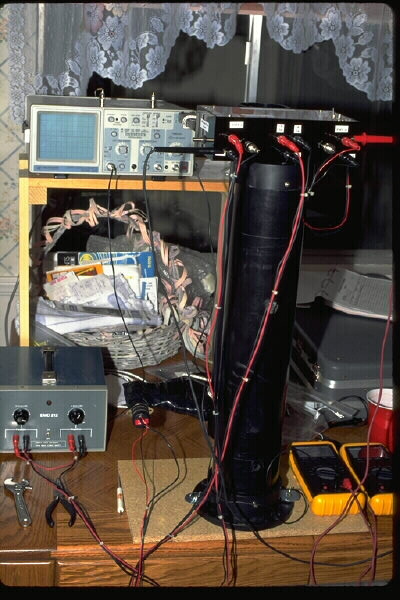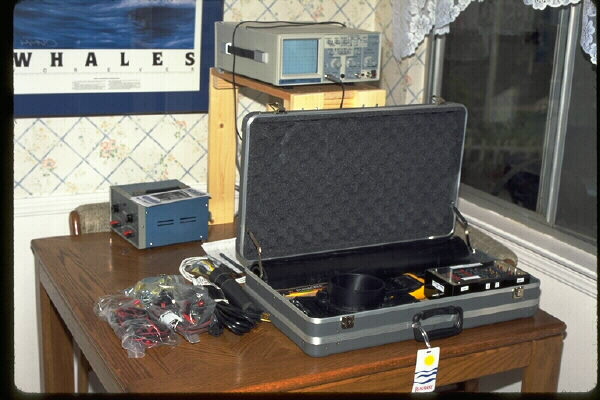Building the Cosmic Ray Telescope |
||
|
01 Scintillator Construction This is one of the scintillator panels. Three pairs of detectors like this are used in the CCRT. When any energetic charged particle such as a muon passes through the rectangular panel, organic dyes in that special plastic fluoresce. The light emitted is then reflected by the polished surface and the aluminum foil shroud and guided by the triangular panel of standard acrylic plastic, until it reaches the photomultiplier (PM) tube attached at the left end. The PM tube takes these extremely faint flashes of light and converts and amplifies them into electrical signals that can then be processed by the electronics board. |
|
02 Scintillator Construction II This is another view of the construction of a scintillation detector just prior to wrapping. |
|
03 Wrapping the Detector In order to detect faint flashes of light, ALL external light must be excluded. This is surprisingly difficult. Black electrical tape is the preferred material for ensuring this, especially around irregular objects like this. Layer after layer of tape is carefully applied. Special attention is given to every corner and joint. |
|
04 Calibrating the CCRT for KAO exp. The assembled CCRT must be tested and calibrated. The detectors are tested for light leaks. The photomultiplier tube bias voltage must be adjusted to maximize signal but minimize dark current. The discrimination levels on the electronics board must be set so as to make sure that we are not just amplifying noise. And finally, the equipment is tested using a radioactive source to make sure that it is only counting charged particles that pass through BOTH detectors. |
|
05 Packing it Up This CCRT system was designed to be used on a NASA mission aboard the Kuiper Airborne Observatory out of Hickam Air field, Honolulu, Hawaii. The system had to travel well and not set off any alarms because of its resemblance to a bomb! |




